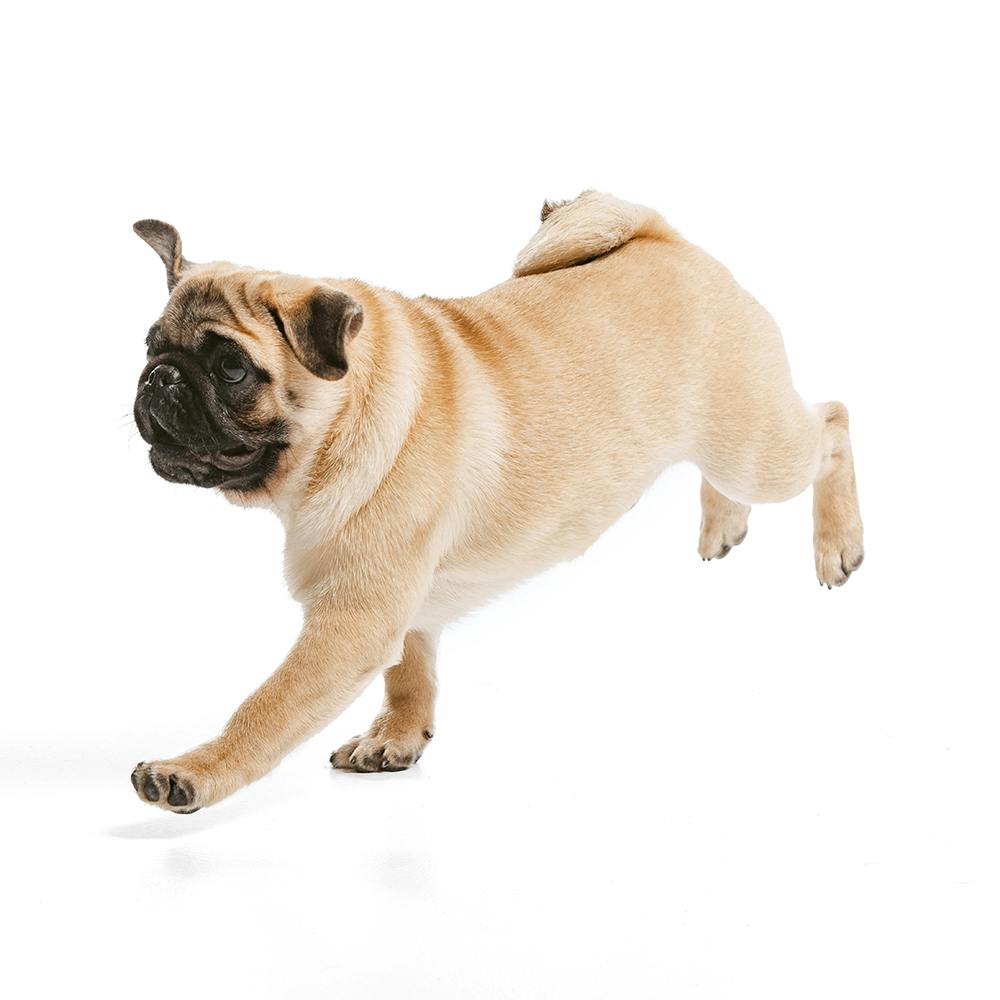
Pug
The Pug is a breed of dog with historical origins in China, dating back to the Han dynasty (B.C. 206 to A.D. 200). These dogs were prized possessions of the emperors of China and lived in luxurious accommodations. Sometimes they were even given soldiers to guard them (1). They were later imported to Europe in the 16th century via the Dutch East India trading company, where they quickly gained popularity among the royal courts. In England, Queen Victoria developed a deep passion for the breed, which helped increase their popularity. The Pug was officially recognized by the American Kennel Club (AKC) in 1885.
- Origin
- China
- Alternate Names
- Lo-Sze, Dutch Mastiff
- Life Expectancy
- 13-15 years
- Average Male Height
- 10-13 inches
- Average Female Height
- 10-13 inches
- Average Male Weight
- 14-18 pounds
- Average Female Weight
- 14-18 pounds
- Coat Length
- Short
- Coat Type
- Smooth
- Coat Colors
- Black, Fawn
- Coat Pattern
- Black Mask
Genetic Predispositions and Health
Pugs can suffer from eye problems including dry eye or corneal ulcers. Like other brachycephalic breeds, they can experience breathing problems and do not do well in humid or hot weather. Pug Dog Encephalitis, hip dysplasia, May-Hegglin anomaly, pyruvate kinase (PK) deficiency, elongated palate, stenotic nares, entropion, nerve degeneration, seizures, patellar luxation, allergies, demodicosis, keratoconjunctivitis sicca, obesity, hemivertebra, and Legg-Calve-Perthes disease (LCPD) are other conditions that may affect this breed. Face wrinkles should be kept clean and dry as they are susceptible to skin fold dermatitis. The breed is also sensitive to anesthesia, and this should be discussed prior to any planned surgery.
Personality and Behavior
Pugs are well-known for their friendly and sociable demeanor. They are known to be stubborn but are rarely aggressive, which makes them good for families with children. They are also known for their playful and clownish behavior, often referred to as 'clowns of the dog world'. Pugs enjoy both playtime and downtime with their owners, making them adaptable companions.
Fun Facts
The classic reference to a group of pugs is a "grumble", as in "Look at that grumble of pugs in the park".
Pugs are also sometimes referred to as "Dutch Mastiffs" due to their historical association with the Dutch royal court. In China, they are called "Lo-Sze" .
The Pug is the official breed of the House of Orange in the Netherlands after a Pug reportedly saved the life of William, Prince of Orange, by alerting him to approaching Spaniards in 1572.
Pugs have a distinctive curly tail that tightens up when they're excited or playful.
References
https://www.akc.org/dog-breeds/pug/
https://www.petmd.com/dog/breeds/c_dg_pug
https://www.pawprintgenetics.com/products/breeds/32/
https://www.fci.be/en/nomenclature/PUG-253.html
https://www.ukcdogs.com/Pug